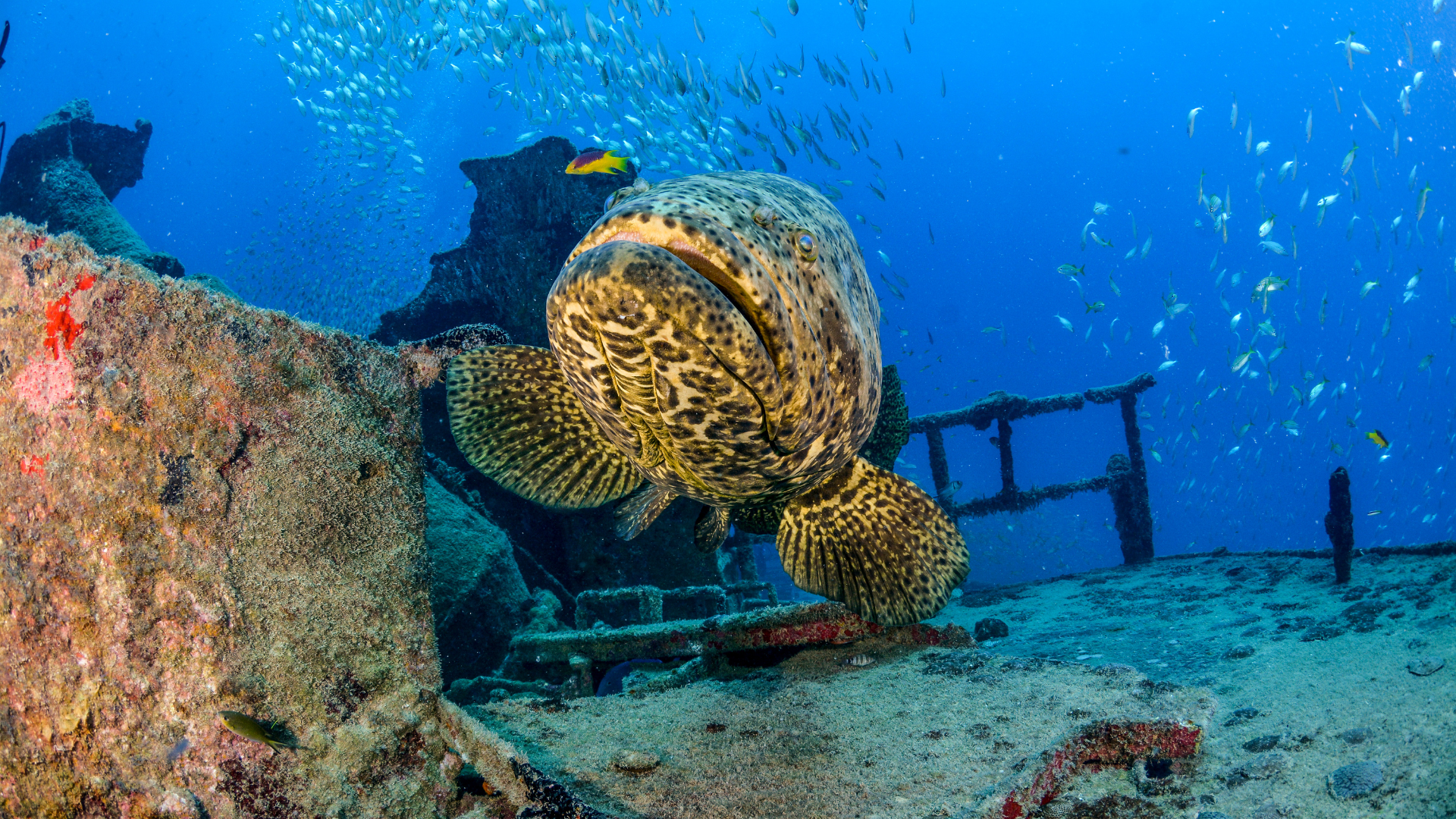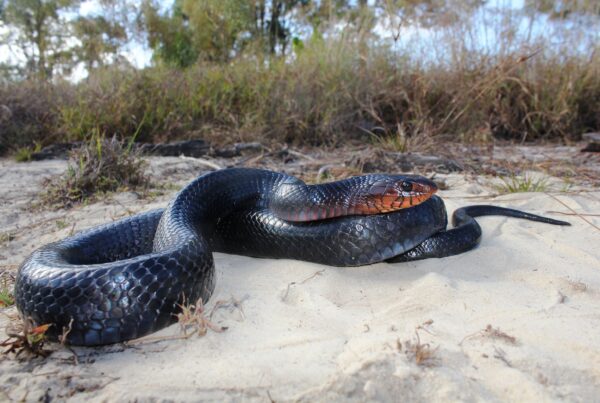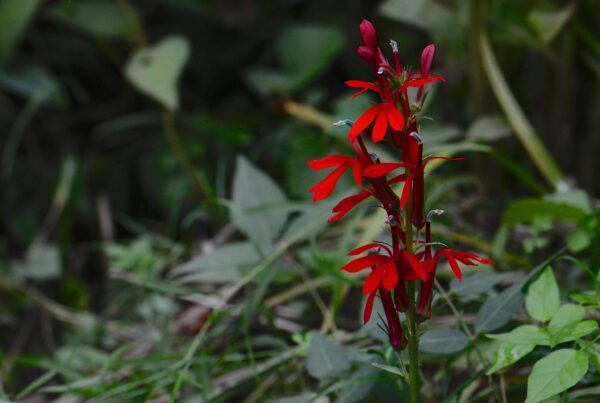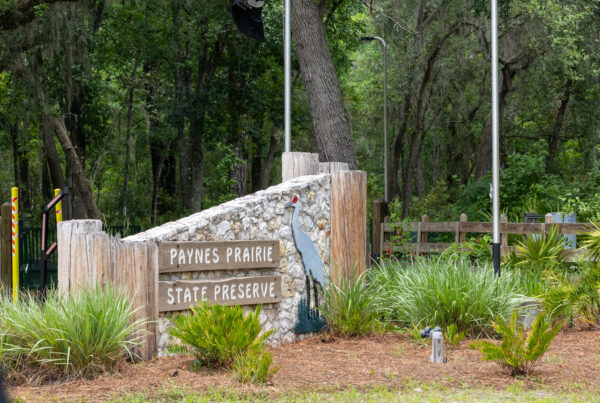In the warm, reef-lined waters off Florida’s coast, few sights are as awe-inspiring as a goliath grouper. These gentle giants can reach up to 8 feet long and weigh over 800 pounds, making them the largest grouper species in the Atlantic. Slow-growing and long-lived, they can live over 35 years and don’t begin reproducing until around age six. That combination of traits makes them especially vulnerable to overfishing and habitat degradation—two threats that nearly wiped them out by the 1980s.
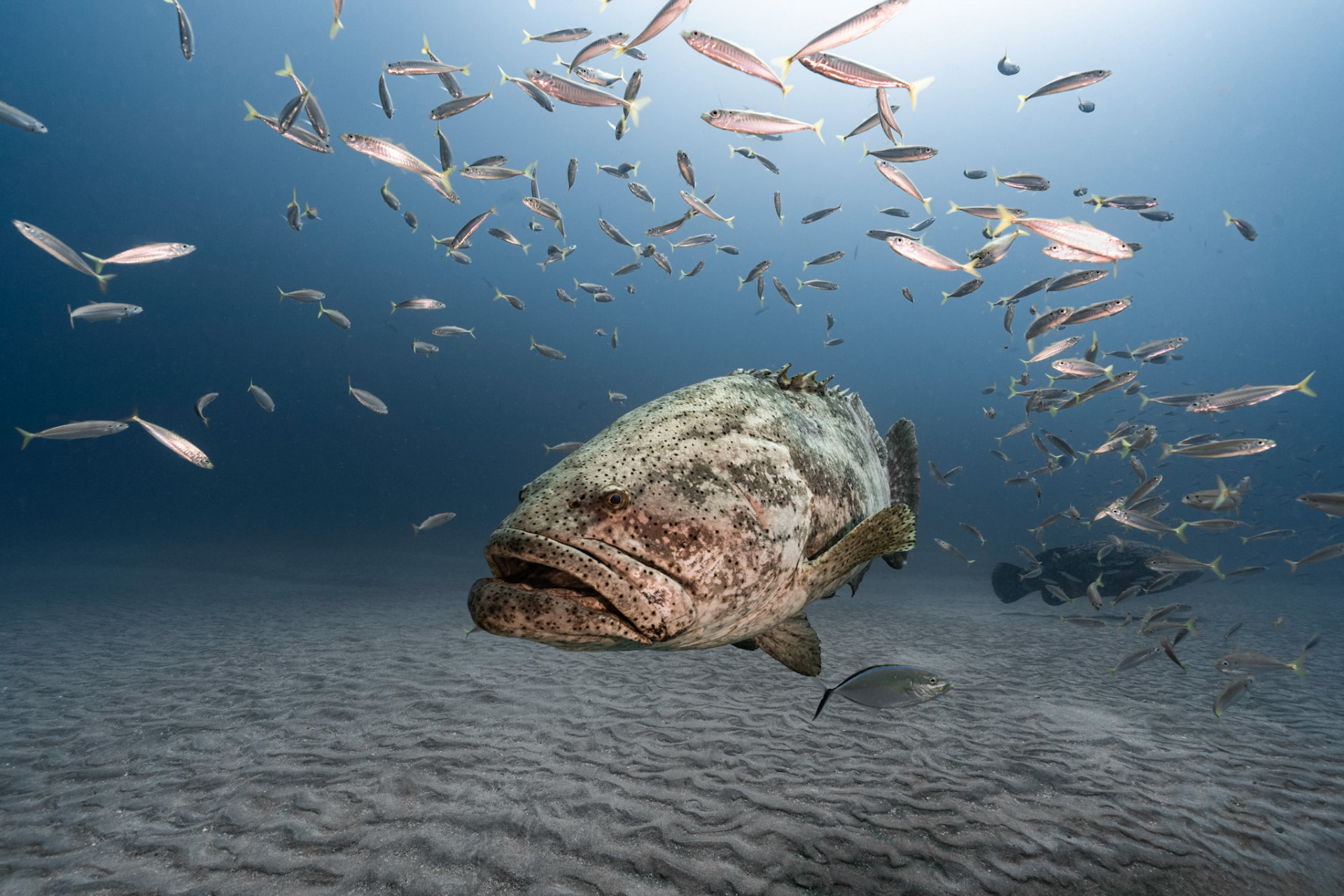
Goliath Grouper. Photo by Rayna Onan
Once commonly caught for sport and food, goliath grouper populations declined so drastically that a full harvest ban was implemented in Florida in 1990. While some localized recovery has occurred, the species remains protected under state regulations due to its vulnerability and slow reproduction rate. At the federal level, the goliath grouper is currently classified as a Species of Concern by the U.S. Fish and Wildlife Service, reflecting continued conservation concern and the need for careful management to ensure long-term recovery.
FWF’s Role in Securing Key Protections
In 2022, the Florida Fish and Wildlife Conservation Commission (FWC) approved a limited recreational harvest season for goliath grouper—allowing up to 200 permits per year for fish between 24 and 36 inches, harvested only with hook-and-line gear between March 1 and May 31.
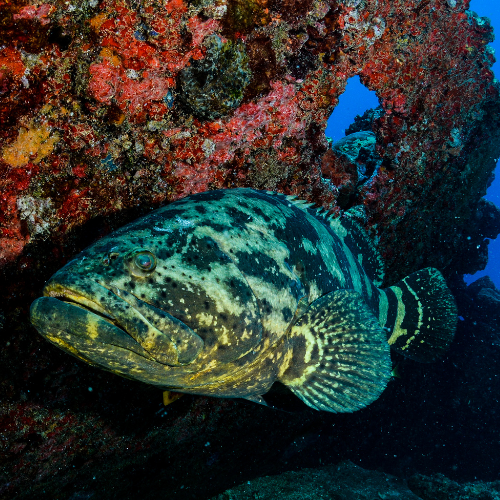
Thanks to those efforts, several important protections were upheld, including:
- A full harvest prohibition in state waters from Martin County south through the Atlantic coast of the Keys
- A seasonal closure prohibiting any fishing within 1,000 feet of known spawning sites from July 15 to October 15
These closures are vital for protecting goliath groupers during spawning, when they gather in large numbers and are most vulnerable to disturbance.
FWF’s advocacy ensured that spawning zones—essential to the species’ recovery—remain safe from harvest, protecting future generations of these incredible fish.
Why It Matters
Goliath groupers are more than just big fish—they’re an essential part of Florida’s reef ecosystems. As apex predators, they help regulate populations of smaller reef fish, contributing to a balanced food web. They’re also a huge draw for dive tourism, especially in Southeast Florida, where divers travel from around the world hoping to spot these charismatic creatures.
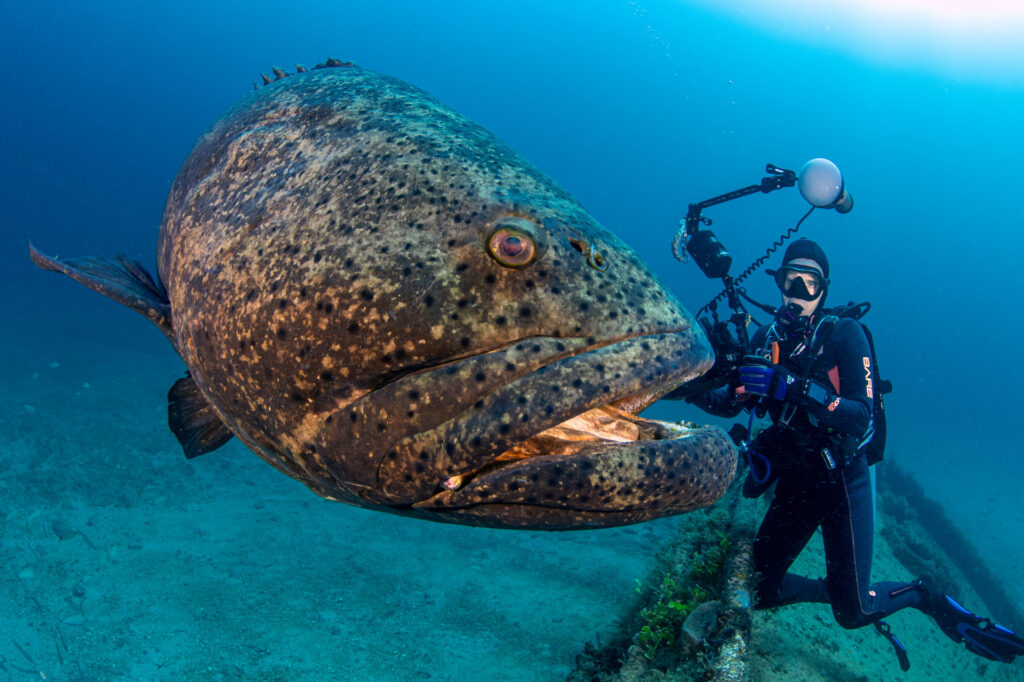
Goliath Grouper. Photo by James Garber
What Can You Do
If you’re planning any fishing activities this spring, it’s critical to stay up to date with regulations. The limited harvest runs from March 1 through May 31, but be aware of regional closures—no harvest is allowed in waters off Martin County through the Atlantic Keys. You can find the latest rules at myfwc.com.
Protecting these magnificent creatures is vital for maintaining healthy marine ecosystems. If you encounter a goliath grouper while diving or fishing, observe them without disturbing their natural behavior—and avoid known spawning areas while boating or exploring reefs.
By spreading the word about the importance of conserving goliath groupers and other vulnerable reef species, we can help ensure these giants of the sea remain part of Florida’s underwater world for generations to come.


